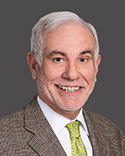In a well-argued case, the closing argument tracks—and elaborates on—the course set forth in the opening statement, which may be thought of as a “pledge” to the audience (because it takes the form of “the evidence will show”). And it is the most clearly structured and (usually) uninterrupted narrative of the trial. The lawyer delivering the closing is both author (he created the narrative) and narrator (he’s commenting on things that happened in the past―both the near past of the trial and the deeper past that the trial testimony ostensibly refers to). In commenting on what has taken place at trial—implying motives and suggesting states of mind that are inherently unknowable—the lawyer’s argument, as Wayne Booth says of the novel, “comes into existence as something communicable, and the means of communication are not shameful intrusions unless they are made with shameful ineptitude.” Because there is no distance between author and narrator in a closing argument, credibility is paramount, lest he lapse into “unreliable narrator” territory where, as Booth warns, “If he is discovered to be untrustworthy, then the total effect of the work he relays to us is transformed.”
This suggests that a lawyer’s closing performance—though free with respect to many particulars—must hew to generic expectations of what a closing argument should look like (perhaps unduly informed by television and movies). Thus, closing arguments tend to have a recognizable spine: praise for the jury’s dedication and diligence, a few personal touches designed to show a common history and shared values, a selective appropriation of the evidence ordered into story form, and scattered commentary casting doubt on the opposition’s case. The goal is of course to appear spontaneous and credible—hence we often see allusions to family and geography designed to draw jurors into a sense of shared community and values. And there’s typically an overall move to cast the jurors in a heroic light: individuals who are there to exercise their “common sense” as a shield against the opposition’s attempts to obfuscate with manufactured evidence and legal irrelevancies. A closing of this sort takes on the character of what Anthony Amsterdam and Randy Hertz have identified as a fabula, bearing many of the marks that we’ve already noted in our prior discussion of story structure. These characteristics become fully apparent in Daniel Webster’s closing argument in the 1830 case Commonwealth v. Knapp, which knots together many of the threads that we’ve spun to this point: fictions, exemplary narratives, and the lawyer’s performance as narrator in closing arguments. As we’ll see, Webster deploys a framed narrative to serve as an exemplary narrative. The interaction of those concepts is critical, so let me briefly detour before getting to Webster’s argument itself, next time in Part 2.
To recap a point or two that I made in a previous installment, at trial there’s an inevitable tension between story and discourse, which is to say between what “really” happened in the past and the presentation of what happened in the specious present of the trial. In a classic murder scenario, Frank is hard up for money, while his aging uncle sits on an unused fortune. If the uncle dies, Frank will inherit. So Frank hires a hitman to do the uncle in. The hitman breaks into the uncle’s home through a garden window and stabs the uncle while he sleeps. But the hitman unwittingly leaves footprints in the garden, footprints that bear the markings of an unusual shoe, which the police quickly trace back to the hitman, who—once arrested—confesses and implicates Frank in exchange for leniency. That is the story—what really happened, set out in more or less chronological and causal fashion. At trial, though, jurors will hear a jumble of evidence taken out of sequence. For example, the first witness may be the coroner, testifying that the uncle died of stab wounds. A casino manager may then testify that Frank had a gambling problem and that he owed thousands of dollars in gambling debts. Then the owner of a shoe store may testify about the rare shoes and how someone who looked like the hitman bought shoes with the unusual sole. Maybe the jury will see a plaster cast of a shoe imprint and be told by an expert that it is consistent with the unusual soles of the shoes they were told about. The hitman may then testify that Frank hired him to kill the uncle. But each of these witnesses will be subject to cross-examination, and other witnesses may say contradictory things. From this discourse, as we’ve already discussed, each of the jury members must construct a narrative that will justify (to each of them) the verdict that they will vote for. How close that reconstructed narrative resembles the real narrative is of course another matter. What we’re concerned with now is how a lawyer can take trial discourse and (re)perform it in a way that guides the jury to one narrative version or another.
Next time, in Part 2, we’ll dissect Webster’s closing argument in Knapp (which shares features of my hypothetical murder narrative) and contextualize it within what literary theorists call the concept of “framed narration.”
Randy D. Gordon is the office managing partner of the Dallas office of Duane Morris LLP. He is executive professor of law and history at Texas A&M University. His new book project, “The Performance of Law: Everyday Lawyering at the Intersection of Advocacy and Imagination,” from which this series is partially excerpted, will soon be published by Routledge.
Reprinted with permission from © ALM Media Properties LLC. All rights reserved.








